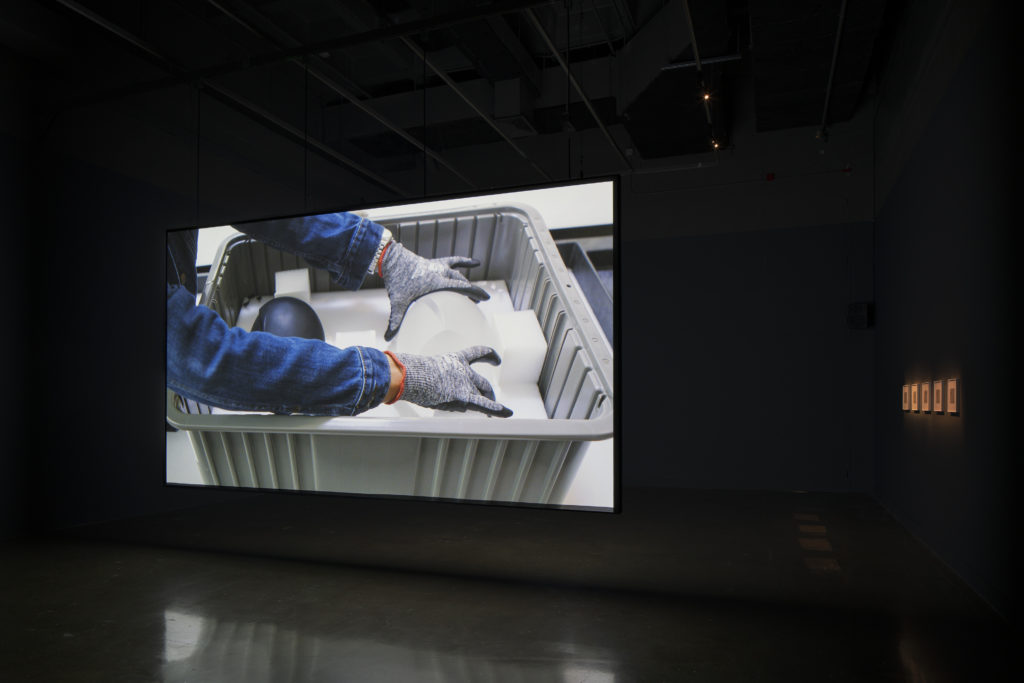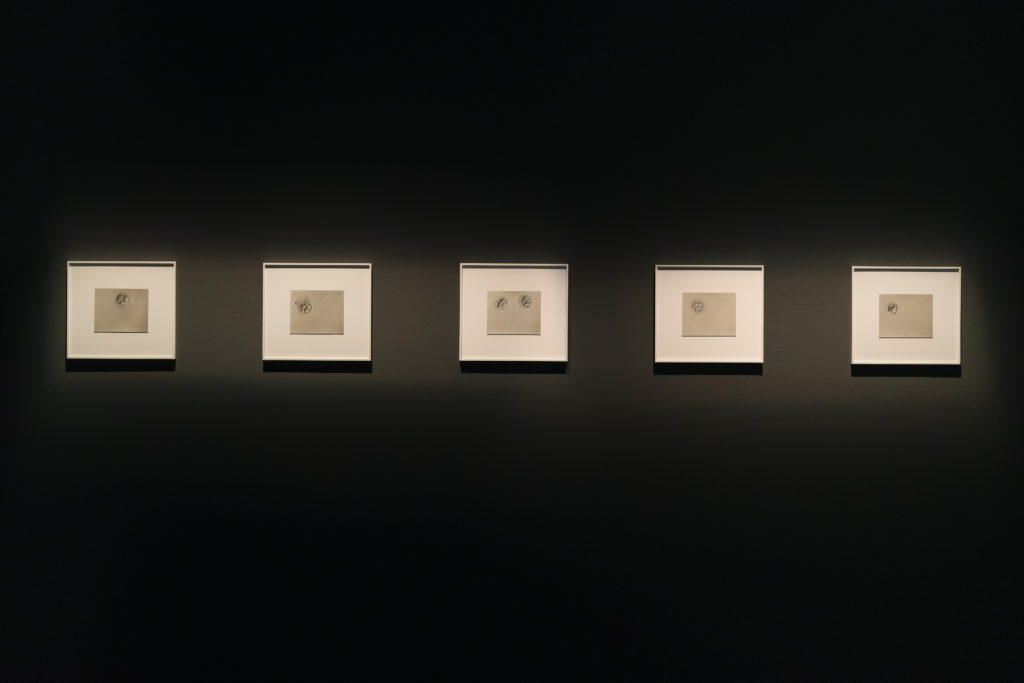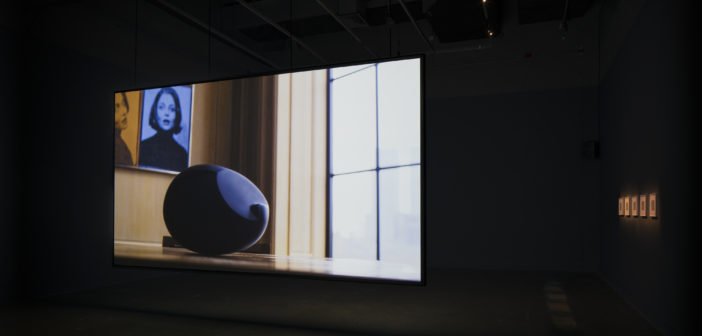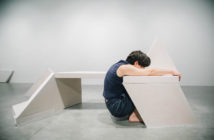Carissa Rodriguez’s exhibition The Maid is currently on view at the MIT List Visual Arts Center. The exhibition includes several video works and photographs. The Maid examines the complex interconnections inherent to power dynamics in relation to labor. This is achieved through a critical examination of the production process of art, and how the process itself is tied intrinsically to the image of the artist as laborer. Of further interest to Rodriguez is the specific context of the fabrication of the artwork, and how the often-overlooked part of this process is in fact a complex set of circumstances specific to the location where the work is made. This is an integral aspect that details the narrative of the person and site, and opens the space for dialogue regarding what the physical and psychological labor of creating art objects aims to communicate.
The Maid (2018) is a video work commission, which runs for 12 minutes and 22 seconds. The narrative is central to a sculpture, egg-like in form with an indentation in its side. The MIT List Press Release explains, “The Maid follows a selection of American artist Sherrie Levine's Newborn sculptures throughout the course of a day in various residences, private and institutional, from New York to Los Angeles. Levine made the works in crystal and black cast glass in the early 1990s, molding them after Constantin Brancusi's marble and bronze sculptures of the same name from 1915 and 1920.”¹ It is conclusive, then, that the motivation of Rodriguez is to show the way in which works inform one another, but also that the locations where these artworks end up is nebulous. An artwork is made with a certain intent—both conceptually and in relation to the ideal space in which it would be displayed. These layers of intention directly result from the labor inserted into the realization of the art.
The video also examines the concept of time, specifically in relation to the artwork exceeding a human lifetime—a relic of labor that persists. Regardless of the artist’s lifespan, the object itself continues to represent the action and labor applied to it. When it is viewed, among other items, the time that it took to realize is considered. Any different layers of mediation, from the sculptural object, to the video itself, are all aspects of interconnected, entangled labor.

Carissa Rodriguez, "The Maid," 2018, video still, 2018.
Additionally, in the photographs titled All the Best Memories are Hers (2018), Rodriguez displays five intimate works, 5 by 12.5 inches in size each. These abstract compositions are derived from an LVT negative and produced as a silver gelatin print. This specific process requires a transfer, resulting in information moving from one medium to another. The ensuing images are abstracted circular forms, off-center in all of the compositions. Some of the circular forms display detail akin to a geometric pattern, while some display forms evocative of a moon crater, or a cigarette burn. Arguably, this is to further illustrate the labor necessary in realizing these works. It is a process of making an intangible idea tangible, and then transferring it to another medium to further communicate the conceptualization of the labor process by evidencing it in the work’s information tag. Often in art production, there persists the intent to conceal the labor process inherent to making the work. Here, it is openly presented for the viewers consideration.

Carissa Rodriguez, "All the Best Memories are Hers," 2018 Installation view, MIT List Visual Arts Center, Cambridge, MA, 2018.
¹ Carissa Rodriguez: The Maid, Press Release, MIT List Visual Arts Center. Accessed: June 18, 2018. https://listart.mit.edu/sites/default/files/Rodriguez_Final%20Press%20Release%283%29.pdf
The show is scheduled to run from May 18, 2018 until July 29, 2018. The MIT List Visual Arts Center is located at 20 Ames Street, Building E15 in Cambridge. For more information on the exhibition, including hours and accessibility, please visit: https://listart.mit.edu/exhibitions/carissa-rodriguez-maid




